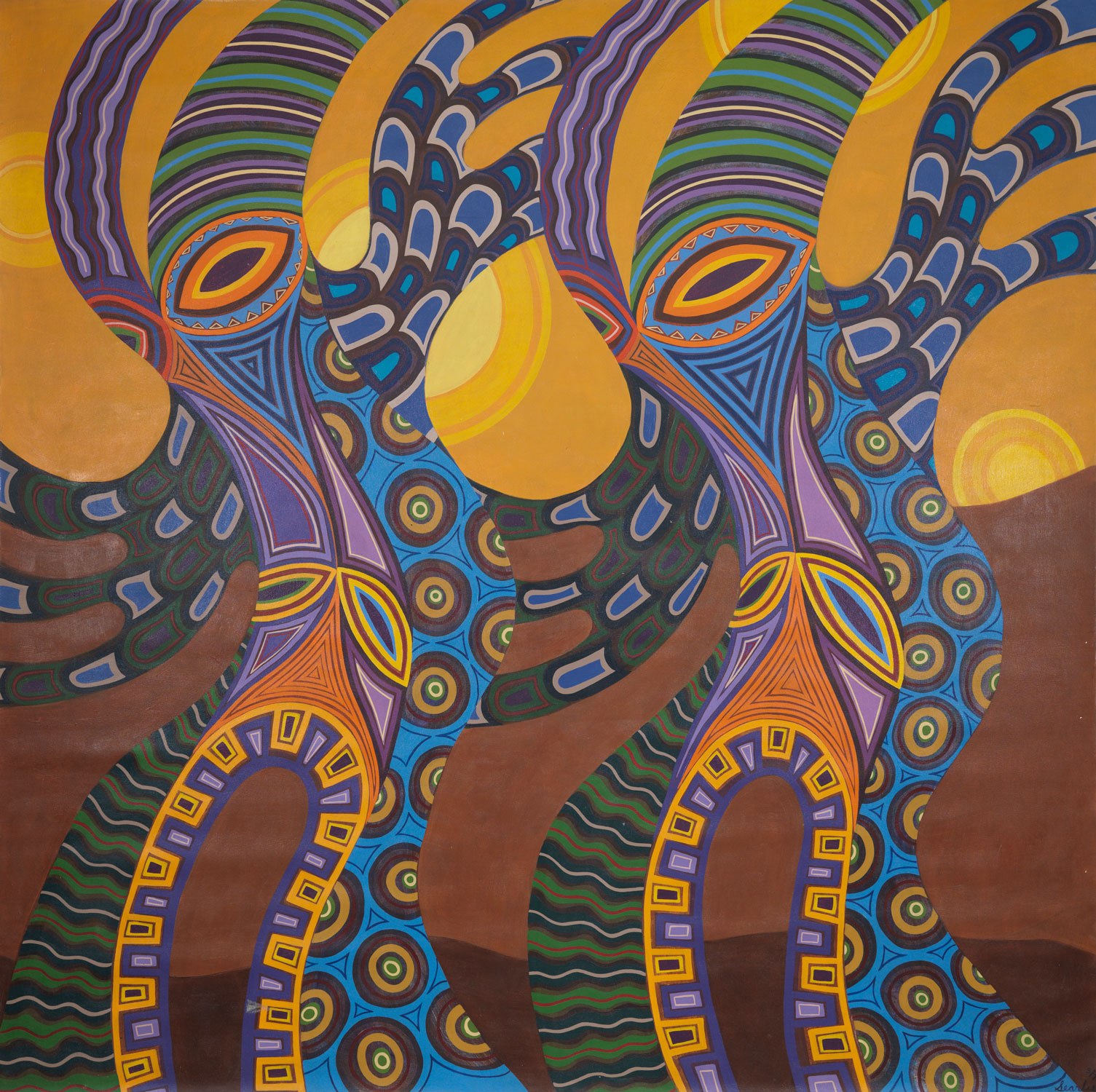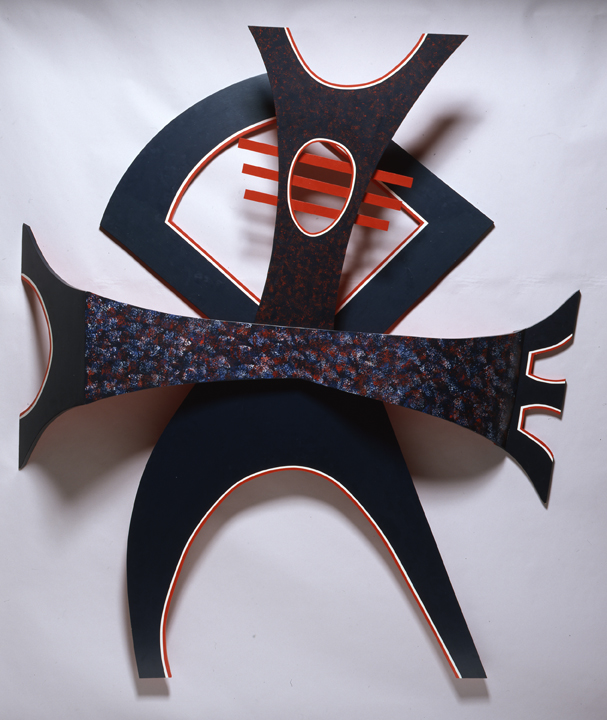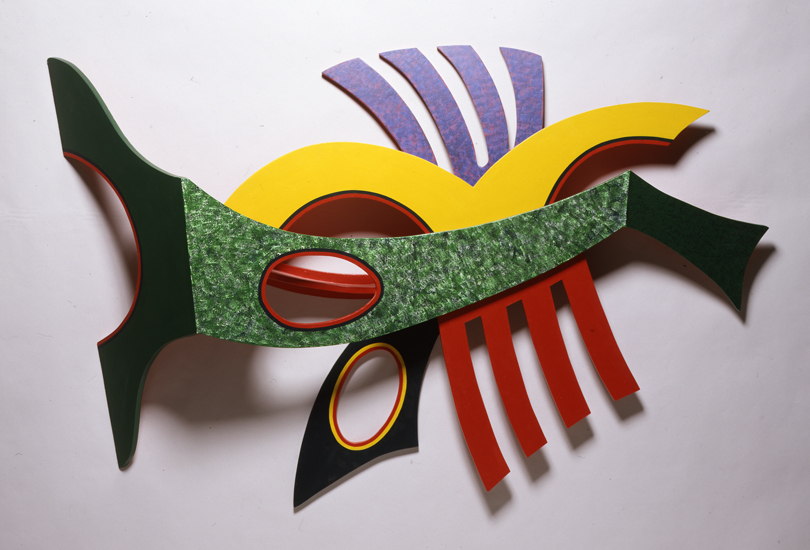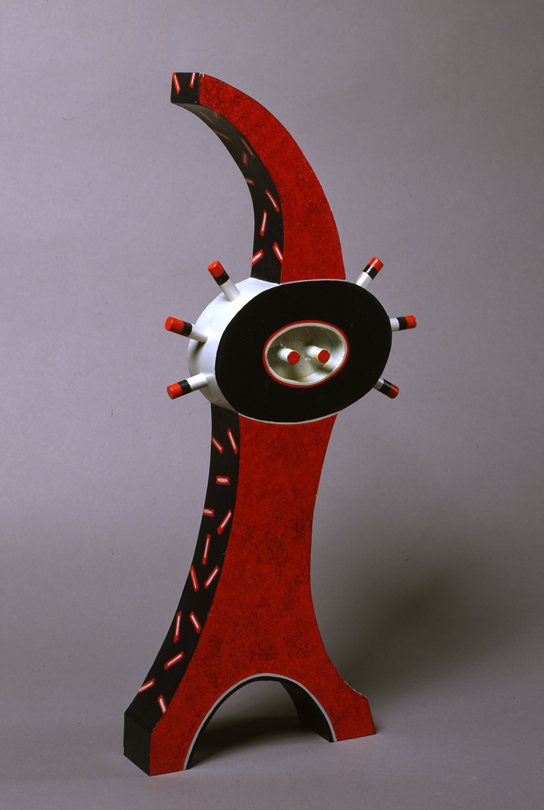
Dance of the Twin Souls
Charles Searles
"Dance of Twin Souls," strongly reflects the aesthetic consideration of the AfriCobra group from Chicago in the 1970's, which sought to reinterpret African influences into a contemporary African-American context. In "10 in Search of a Nation," Jeff Donaldson, a leading member of AfriCobra outlined a set of formal principals that "African people can relate to without formal art training and or experience." These included incorporating the symmetry and rhythm of jazz and African textiles, using natural forms as found in nature and having a lustrous "shine" similar to the patina of African sculpture. A hallmark of the AfriCobra influence was the intense, often psychedelic, colors. The end result was to be "expressively awesome" so that the art would "heighten the viewer's spiritual awareness and political consciousness."
AfriCobra's influence on Charles Searles was such that after his graduation from the Pennsylvania Academy, he traveled to Nigeria, Ghana, and Morocco on a Ware Scholarship - the first student to ever do so. His reflections on that trip can be discerned in "Dance if the Twin Souls." "In the Western style of dress we see a print shirt against plaid or plain,but in Africa it was checks against stripes against polka dots. That became a major awareness for me, so that when I got back, I began to paint things combining patterns."
During the time of this painting, Charles Searles was hugely influenced by seeing dancers at the Iile-Ife Cultural Center in Philadelphia where he worked, incorporating their sinuous forms and stylized African movements into both a three dimensional (sculpture) and two dimensional (drawing, painting, and printmaking) form.
Artist
Date of Birth
(1937-2004)
Date
1987
Medium
Acrylic on canvas
Dimensions
72 x 72 in. (182.88 x 182.88 cm.)
Accession #
2005.18
Credit Line
Gift of Kathleen Spicer
Copyright
© 1987 Charles Searles
Category
Subject
More by Charles Searles
We're so excited you're planning to visit PAFA!
Make time for art — visit us Thursday to Sunday.
Before reserving your tickets, please review helpful information about museum hours, accessibility, building access, and special admission programs.
If you have any questions, feel free to reach out to us at visitorservices@pafa.org — we’d love to help!



